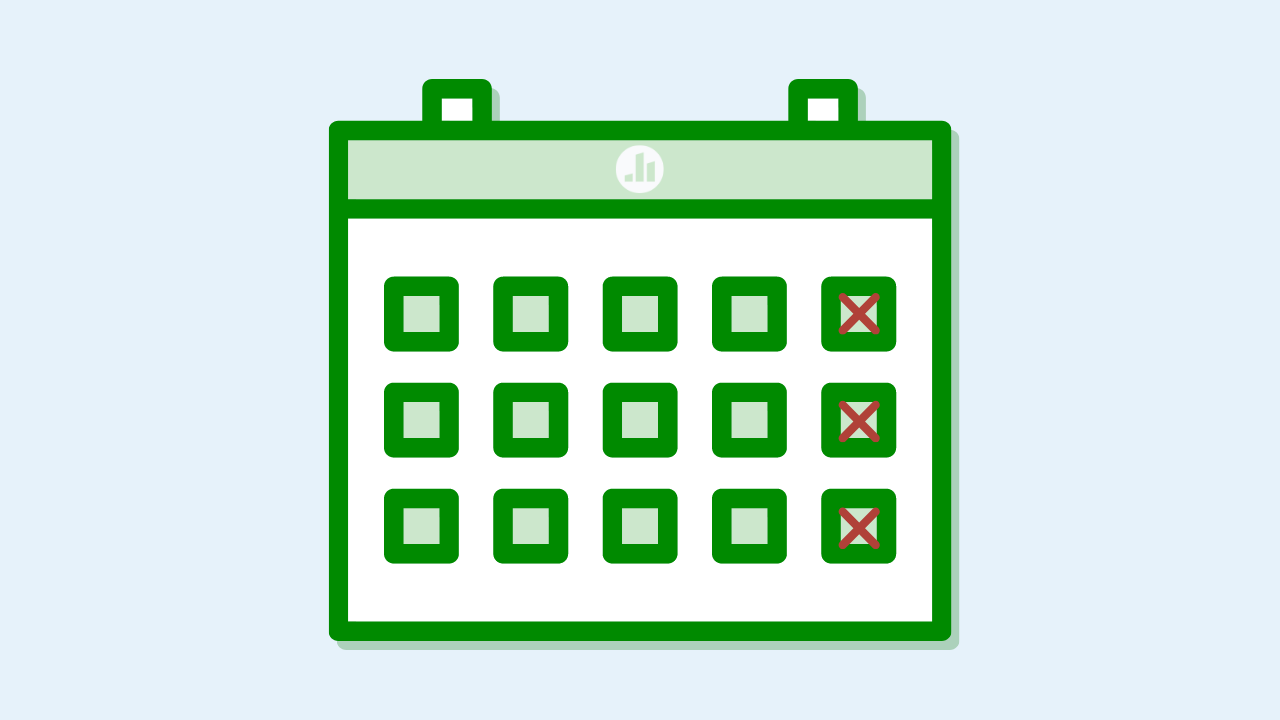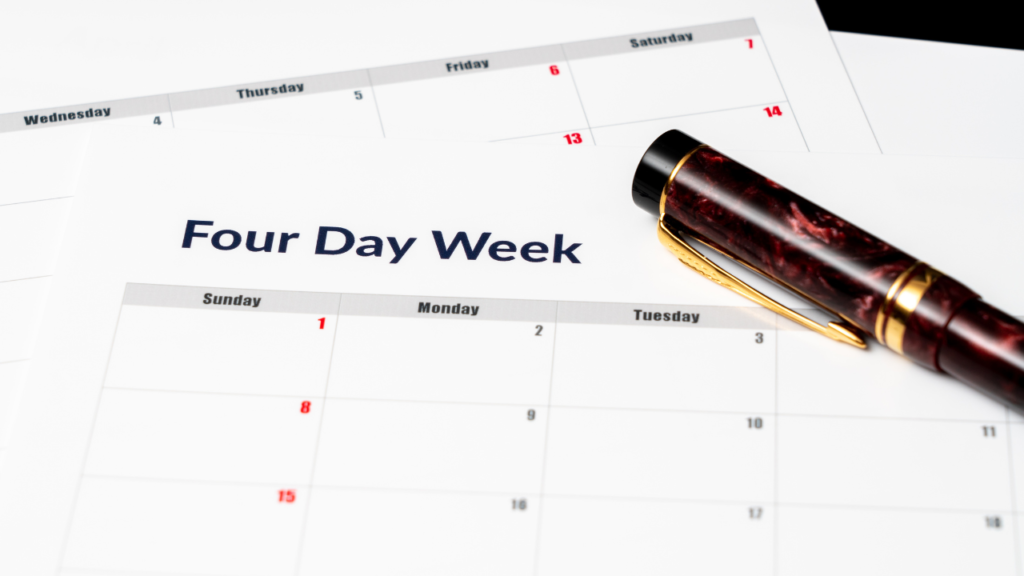How Poll Everywhere evaluated a four day work week trial

In early 2022, the new leadership at Poll Everywhere set a course for the company to try a four day work week experiment that we called “Summer Fridays.” We set the expectation for all of our approximately 60 employees to work 32 hours a week across only four days. Most employees took off Fridays, however, some customer-facing teams staggered the days off in order to provide service for our customers. After several company wide surveys, statistical analyses, and considerable thought and discussion we have arrived at some conclusions about how a four day work week suited our business, culture, and employees.
We will share how we landed on the program we ran for two months of 2022 in June and July, what happened, our next steps, and our deeper analysis of how to move forward.
Why did we try a four day work week at all?
One of our company values is a growth mindset. Trying new things and new ways of working is part of that. Another value we hold is data-orientation. We did an extensive amount of reading and research. Some of our employees formed a committee to evaluate the opportunity and report, but the primary reason we tried it was because we didn’t know of another way to properly evaluate it. Experiments like this are something that shows our values are real to all PollEvians.
We felt we understood the promise of improved creativity, mental health, and employee engagement. We also felt concerns about our customer facing teams and contractual obligations. We had concerns about how many employees in remote working cultures feel a lack of engagement or connection with their peers and fewer days working means fewer opportunities to connect and build relationships. Despite these concerns, we thought the benefits were worth the exploration.
Why Summer Fridays?
We selected Summer for the simple reason that it is one of the seasonally slowest periods on our calendar. We felt that Summer was thus a great time for employees to have more time off for practical reasons like typical family vacations, school calendars, and weather but also because it risked less in terms of our growth and our level of service to our customers.
Our Summer Friday goals
We wanted to improve our appeal to talent both in hiring and retention. We also wanted to improve employee experience, mental health, and engagement after some difficult years through the pandemic. We also sought to use a shorter schedule to make us more accountable — we felt it was necessary to be more efficient if we were to accomplish what we needed to in a shorter time frame and we assumed many meetings would get canceled or reconsidered.
Summer Friday observations and outcomes
Three day work weeks
We were surprised to discover that the first clear message from employees was that the holiday weeks where we took both a Monday and a Friday off were unwelcome. We learned that they created too much pressure and cut productivity too much. They produced anxiety. The clearest outcome here is that we will have a minimum four day work week should we implement Summer Fridays again.
Customer-facing teams
We took some pains (and likely not enough time) to plan how we would approach the scheduling of each of our teams that interact with customers daily. Positive customer experience is a pillar of our organization and a large part of what we are known for. Simply put, we don’t approach it lightly. For this reason, Sales, Success, and Support all adopted slightly different ways of working through Summer Fridays.
Support rotated staff through either a four day work week taking Thursday or one taking Friday. This allowed us to keep our promises to customers and have some backups for staffing across time zones.
Success carefully messaged our managed customers and rotated at least one senior team member into a role that was available for minor escalations on Fridays. It worked quite well for the team and helped more team members unplug completely when it was their turn.
Sales also implemented a scheme similar to Success. It is important to us to respond in a timely manner to customers and leads, but we were able to do that with some simple coverage schemes.
The customer-facing teams were one of our biggest concerns in execution before the program began, but it turned out to proceed fairly smoothly with a little planning.
Engineering
We expected the biggest beneficiaries of this scheme to be our Engineering department. They have naturally parallelized work and tooling. They do largely Information Age, creative work that requires deep thinking and a fresh mindset. Four day work week and engineering outcomes and culture appeared to us to be a hand-in-glove fit.
Engineering ultimately struggled with communication pathways, reduced meeting structure, and reduced time for communication overall. Some cross-team patterns of communication outside Engineering were also disturbed in a similar way.
A team member might feel that they needed to put a lower priority into the next morning rather than that afternoon. That happens in any week, but it happens a bit more and more structurally in a four day work week in our experience. This pressure might mean that another team is waiting until morning for that item rather than getting it the prior day. Some team members work different time zones that exaggerate this time difference in practice. It can be the difference between this week and next week. Crossing many teams increases calendar time lag. This drag on the system had a substantive net drag on overall productivity and perhaps most of all in the group we expected to soar on the wings of a four day work week.
Mental health
Mental health was a clear win for our employees. We expected this lift and it was fulfilling seeing it play out. After some difficult years in the pandemic, it was heartwarming to see all sorts of PollEvians finding meaning and purpose outside of work.
American culture often lionizes the idea of working harder than anyone else to get ahead, but at Poll Everywhere we would like to see our employees build meaning and life outside of work as well as in it. It’s important to do some things for the joy of doing it. It’s critical to rest in order to do your best work and to relate to others. Improved mental health is a win for everyone.
Employee retention
In cataloging our retention outcomes for the year, we don’t believe that this program impacted any of the decisions of those that were informed about or present for the program. Simply put, Summer Fridays did not impact employee retention. We think it is possible that it could be a tool for employee retention, but our observations so far don’t show that in data. This was a mild surprise, but the short duration and novelty of the program may explain it.
We recognize that we only have a handful of data points to suggest that this doesn’t influence the choices of employees to seek new opportunities, but from a data-orientation perspective these are also all of the data points that we have. We have the hypothesis that the outcomes would be better in a complete four day work week or an expanded Summer Fridays program over many years, but we have no existing data to support that yet.
Productivity and creativity
We had multiple reports of improved creativity and mental energy on Mondays. This was an exciting outcome. Some employees felt more productive, but most suggest similar levels or slight declines in our survey. Most of our employees felt able to work their normal week in the four days. Our managers and executives shared the feeling that weeks were more intense, but that the extra day brought them back to work feeling more refreshed and creative than before.
These data points are slightly confounded by our mistake in having some three day work weeks on the same weeks as holidays. The problems we observed with execution and a few missed deadlines may have as much to do with the logistical planning as with the concept of working four days in a week.
We did, however, have to balance the creative energy against the issues identified in the Engineering section above. The execution took a hit as the creativity improved. Ultimately, we judge that we lost something in the range of 10-15% productivity in trade for 20% of the work week hours.
We think we can improve that estimated loss of productivity with training, culture, and practice. It’s possible that the creativity could exceed our issues in lost execution and communications in a longer format exploration.
#summer-fridays
For the duration of Summer Fridays we maintained a Slack channel where those reporting in for a Friday rotation of one kind or another could check-in and not feel alone. We also had folks on Mondays share photos and stories about what they did with their Summer Friday.
Almost everyone at the company reported being touched by seeing the constant humanity and happiness in that channel. It is one of the more powerful things that we saw in the experiment.
Conclusions: The future of four day work weeks at Poll Everywhere
We decided to repeat our Summer Fridays in 2023 with some modest expansion in total weeks from 8 to 12. We will not have any three day work weeks for holiday weeks. We will observe the holidays and work those Fridays.
For some, this may be a surprise. Why would we give up any productivity? 10-15% productivity is worth quite a lot to the business, but we feel that examining productivity in a vacuum to make this decision is shy of a final solution.
We plan to write more about our hard analysis of the numbers.Despite some four-day experiments showing higher productivity, that doesn’t always make it an instant and clear-cut win for the business. Somee businesses incur a need to staff up to cover the same hours across the week and the cost structure may offset even a happier and more productive workforce.
In our case, we believe that some changes over time in culture and training could make up much of our losses in productivity. As we will detail in the comprehensive analysis, we also believe that we can make up ground from another direction with improved employee retention and recruitment. We want to invest more in our experiment to prove these hypotheses.
Ultimately, the case for a full-time four-day work week is hard to make for our business based on the data we collected. That said, the benefits of Summer Fridays are significant and impact the lives of all of our employees. We want to repeat the program and attempt to improve some things that fell short. We also believe that a seasonal step-down in work pace can be a great component of work culture if we don’t find a path to a full-time four-day work week.
What will we change for Summer Fridays in 2023?
- No three-day weeks by the company calendar.
- Increase training for remote work collaboration and productivity.
- Increase the logistical planning for projects, communications, and deadlines to suit the style we worked in four day weeks.
- Continuing our pressure to reduce the existence of meetings that can be handled through other means (aka “could this meeting have been an async document or email?”).
- Retros with the teams that struggled the most with communications during the experiment to understand and mitigate the gaps.
- Retros with the team that succeeded with communications during the experiment to find strategies with which to double down.
